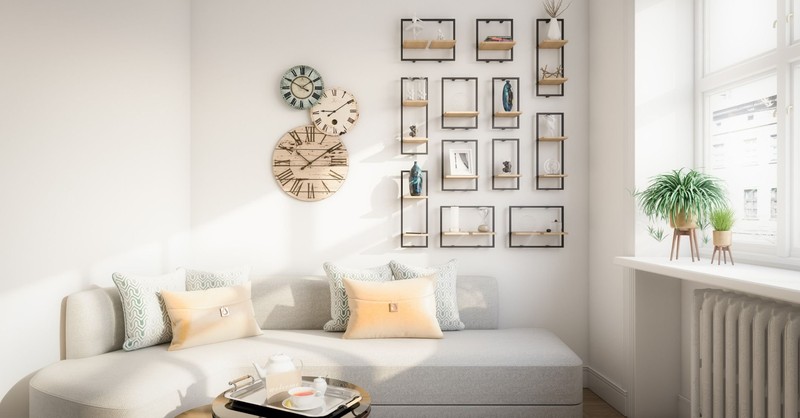The Ultimate Guide to Budget-Friendly Home Renovations

Welcome to the ultimate guide to budget-friendly home renovations! Renovating your home doesn’t have to break the bank. With some careful planning and consideration, you can transform your space without emptying your wallet. In this guide, we will explore various strategies and tips for keeping your renovation project budget-friendly. From assessing your renovation needs to completing the project and maintaining the results, we’ve got you covered. Let’s dive in!
Assessing Your Renovation Needs
Before starting any renovation project, it’s important to assess your needs and determine the scope of the work. Take some time to think about what you want to achieve with your renovation. For those renovating a 3-room HDB flat, considering specific design ideas that maximize space and functionality can be particularly beneficial. Explore this guide by Renozone for practical and stylish interior design concepts tailored to 3-room HDB flats.
Make a list of the areas in your home that require renovation and determine the level of work needed for each. This will help you create a roadmap for your project and ensure that you stay on track.
Additionally, consider factors such as the age and condition of your home. Older homes may require more extensive renovations, while newer homes may only need cosmetic updates. By assessing your renovation needs thoroughly, you can identify the areas that require the most attention and allocate your resources wisely.
Setting a Realistic Budget
Setting a realistic budget is crucial for budget-friendly home renovations. It’s important to have a clear understanding of how much you can afford to spend on your project before diving into the renovation process.
First, take a look at your overall financial situation and determine how much you can comfortably allocate to your renovation project. Consider your monthly income, savings, and any other financial obligations you may have.
Once you have a budget in mind, make a list of all the anticipated expenses for your renovation project. This includes materials, labor costs (if applicable), permits, and any other related expenses. Research the average costs for each item on your list to ensure that your budget is realistic.
It’s also important to include a contingency fund in your budget. Unexpected expenses can arise during a renovation project, so having some extra funds set aside will help you avoid any financial stress or delays.
By setting a realistic budget, you can ensure that you have a clear financial plan in place for your renovation project.
Choosing Cost-Effective Materials
When it comes to budget-friendly home renovations, choosing cost-effective materials is key. While it’s tempting to go for high-end options, there are often more affordable alternatives that can achieve a similar look and quality.
Research different materials and compare their costs. Look for sales, discounts, or even second-hand options that can help you save money without compromising on quality. For example, consider using laminate countertops instead of granite or quartz, or opt for vinyl flooring instead of hardwood.
Another cost-saving option is to repurpose or upcycle materials. For instance, you can give old furniture a fresh coat of paint or repurpose salvaged wood for new shelving. Not only does this help you save money, but it also adds a unique touch to your renovation project.
Remember to also consider the long-term costs of the materials you choose. Energy-efficient options, such as LED light fixtures or insulated windows, may have a higher upfront cost but can save you money on utility bills in the long run.
By choosing cost-effective materials, you can achieve the desired results for your renovation project while staying within your budget.
DIY vs Hiring Professionals
One important decision to make when planning a budget-friendly home renovation is whether to tackle the project yourself or hire professionals. Both options have their pros and cons, so it’s important to carefully consider your skills, resources, and the complexity of the project.
Factors to Consider when Deciding between DIY and Hiring Professionals
When deciding between DIY and hiring professionals, there are several factors to consider:
- Time: Do you have the time to dedicate to the project? DIY projects often require more time and effort than hiring professionals.
- Skill level: Assess your own skills and expertise in the area of the renovation project. If it requires specialized knowledge or tools, hiring professionals may be the better option.
- Budget: Consider the cost implications of DIY versus hiring professionals. While DIY projects may save you money on labor costs, you need to ensure that you have the necessary skills and resources to complete the job effectively.
- Complexity: Determine the complexity of the project. Some renovations, such as electrical or plumbing work, require professional expertise to ensure safety and code compliance.
Benefits of DIY Home Renovations
There are several benefits to taking on a DIY home renovation:
- Cost savings: DIY projects can save you money on labor costs, as you are providing the labor yourself.
- Personal satisfaction: Completing a DIY project can be incredibly rewarding and give you a sense of accomplishment.
- Flexibility: DIY projects allow you to work on your own schedule and make changes as you see fit.
Pros and Cons of Hiring Professionals for Home Renovations
Hiring professionals also has its advantages and disadvantages:
- Expertise: Professionals have the knowledge and expertise to handle complex renovation projects.
- Time savings: Hiring professionals can save you time and effort, as they have the necessary skills and resources to complete the job efficiently.
- Quality results: Professionals can deliver high-quality results, especially in areas that require specialized knowledge or skills.
- Higher costs: Hiring professionals often comes with higher labor costs, which can impact your budget.
When to Hire Professionals for Home Renovations
There are certain situations where it’s best to hire professionals for your home renovation:
- Complex projects: If the renovation project involves complex tasks, such as structural changes or electrical work, it’s important to hire professionals who have the expertise to handle these tasks safely and effectively.
- Lack of skills or time: If you don’t have the necessary skills or time to dedicate to the project, hiring professionals can ensure that it gets done properly and in a timely manner.
- Certain permits or licenses: Some renovation projects require permits or licenses that can only be obtained by qualified professionals.
Consider these factors when deciding between DIY and hiring professionals for your home renovation project. It’s important to choose the option that aligns with your skills, resources, budget, and the complexity of the project.
Planning and Prioritizing
Planning and prioritizing your renovation project is crucial for staying on budget. By creating a detailed plan and setting priorities, you can ensure that your resources are allocated effectively.
Start by creating a timeline for your project. Determine the start and end dates, as well as any key milestones along the way. This will help you stay organized and track your progress.
Next, prioritize your renovation tasks. Identify the areas that require immediate attention or that will have the biggest impact on your overall goals. Allocate your budget accordingly, focusing on the priority areas first. This will help you avoid overspending or running out of funds before completing the most important aspects of your renovation.
Additionally, make a list of the materials and supplies you will need for each task. Research the costs and create a budget specifically for materials. This will give you a clear idea of how much you need to allocate for each item and prevent overspending.
By planning and prioritizing your renovation project, you can ensure that your resources are used efficiently and that you achieve your desired results within your budget.
Repurposing and Upcycling
Repurposing and upcycling items is a great way to save money during your home renovation. Instead of buying new items, consider giving old furniture and decor a new lease on life.
Take an inventory of the items you already have and think about how they can be repurposed or updated to fit your new design. For example, you can paint old wooden furniture to give it a fresh look or repurpose an old ladder into a unique shelving unit. Not only does this save you money, but it also adds character and a personal touch to your renovation project.
In addition to repurposing existing items, consider upcycling materials. Salvaged wood can be used to create custom furniture or accent walls, while vintage tiles can add a unique touch to your kitchen or bathroom remodeling los angeles project. Look for local salvage yards or online marketplaces where you can find these materials at a fraction of the cost of new ones.
By repurposing and upcycling items, you can save money while adding a touch of creativity and uniqueness to your home, kitchen or bathroom remodel burbank.
Maximizing Space
Maximizing space is an important aspect of budget-friendly home renovations. By making the most of the available space, you can create a more functional and aesthetically pleasing environment without the need for costly additions or expansions.
Decluttering your space can make it feel more open and less chaotic, which not only improves the appearance but also the functionality of your home. Before you start decluttering, why not look for more amazing decluttering tips that enhance both the aesthetics and utility of your home?
Next, consider using multi-functional furniture and storage solutions. Look for pieces that serve multiple purposes, such as a storage ottoman or a sofa bed. Wall-mounted shelves and cabinets can also help maximize vertical space without taking up valuable floor space.
Additionally, consider the layout and flow of your space. Removing walls or creating open-concept areas can make your home feel more spacious and allow for better natural light and airflow. However, be sure to consult with a professional if structural changes are involved to ensure the safety of your home.
By maximizing space, you can create a more functional and visually appealing home without exceeding your budget.
Energy-Efficient Upgrades
Energy-efficient upgrades not only help reduce your environmental footprint but can also save you money on utility bills in the long run. Incorporating these upgrades into your home renovation, or bath remodel in woodland hills project can be a cost-effective way to improve the energy efficiency of your home.
Consider upgrading to energy-efficient appliances, such as refrigerators, dishwashers, or washing machines. Look for appliances with an Energy Star rating, as these are certified to be more energy-efficient and environmentally friendly.
Another energy-saving upgrade is to install LED light fixtures throughout your home. LED lights are more energy-efficient and have a longer lifespan compared to traditional incandescent bulbs. They may have a higher upfront cost but can save you money on energy bills in the long term.
Insulating your home is another important energy-saving upgrade. Proper insulation helps to keep your home cool in the summer and warm in the winter, reducing the need for excessive heating or cooling. This can lead to significant energy savings over time.
By incorporating energy-efficient upgrades into your renovation project, you can save money on utility bills while reducing your overall energy consumption.
Adding Curb Appeal on a Budget
Improving the curb appeal of your home can enhance its overall aesthetics and increase its value. Here are some budget-friendly tips to add curb appeal:
- Paint the front door: A fresh coat of paint on your front door can instantly transform the look of your home.
- Landscaping: Trim hedges, mow the lawn, and plant some colorful flowers to create an inviting and well-maintained exterior.
- Upgrade the mailbox and house numbers: Replace old or worn-out mailboxes and house numbers with new, stylish options.
- Outdoor lighting: Install outdoor lighting fixtures to illuminate your walkway and highlight architectural features.
- Pressure wash: Clean your driveway, walkways, and exterior walls to remove dirt and grime and give your home a fresh look.
These small updates can make a big difference in the overall appearance of your home without requiring a significant financial investment.
Decorating on a Dime
Decorating your renovated space doesn’t have to be expensive. With some creativity and resourcefulness, you can achieve a stylish and inviting interior on a budget.
Shop at thrift stores, flea markets, or online marketplaces for unique and affordable decor items. You can find vintage artwork, decorative pillows, and furniture pieces that will add character to your space without breaking the bank.
Consider DIY projects for personalized and budget-friendly decor. Create your own artwork or repurpose items into unique decor pieces. Pinterest and other online platforms are great sources of inspiration for DIY home decor projects.
Focus on creating a cohesive and well-curated look by selecting a specific color palette and style. This will help you narrow down your choices and avoid purchasing unnecessary items.
By decorating on a dime, you can achieve a stylish and personalized space without exceeding your renovation budget.
Saving Money on Permits and Licenses
If your renovation project requires permits or licenses, it’s important to understand the process and explore ways to save money.
Research the permit requirements specific to your area and familiarize yourself with the associated fees. Some permits may have different costs depending on the scope of work or the value of the project.
If possible, consider doing smaller renovation projects that don’t require permits, as this can help you avoid these additional costs.
Some areas offer discounts or waivers for certain permits, particularly for energy-efficient or environmentally friendly upgrades. Check with your local government or municipality to see if you qualify for any cost-saving programs.
It’s important to comply with all permit and licensing requirements to ensure that your renovation is done safely and legally. However, by researching and exploring cost-saving options, you can minimize the financial impact of these necessary expenses.
Research and Comparison Shopping
Research and comparison shopping are essential when it comes to budget-friendly home renovations. By taking the time to research materials, products, and services, you can find the best deals and make informed decisions.
Start by researching different suppliers and retailers for the materials you need. Compare prices, product quality, and customer reviews to ensure that you are getting the best value for your money.
Consider reaching out to multiple contractors or professionals for quotes and estimates. This will allow you to compare prices and services to make sure you are getting a fair deal.
Don’t forget to also look for sales, discounts, or promotions. Many retailers offer seasonal sales or special offers that can help you save money on your renovation project.
By dedicating time to research and comparison shopping, you can stretch your renovation budget further and find the best deals on materials and services.
Negotiating with Contractors
Negotiating with contractors can help you secure better deals and ensure that you are getting the most value for your money. Here are some tips for successful negotiations:
- Get multiple quotes: Reach out to multiple contractors and ask for detailed quotes for your project. This will give you an idea of the average cost and allow you to negotiate based on these estimates.
- Discuss your budget: Be upfront about your budget constraints with the contractors you are considering hiring. This will give them a better understanding of your expectations and may lead to more flexible pricing.
- Ask for discounts or package deals: Inquire about any discounts or package deals the contractor may offer. They may be willing to reduce their rates or include additional services to secure your business.
- Negotiate the payment schedule: Negotiate a payment schedule that aligns with your budget. Consider breaking the payments into milestones rather than a lump sum to ensure that the work progresses as expected.
- Review contracts carefully: Carefully review the contract before signing it. Pay attention to the scope of work, pricing, and any warranties or guarantees. If anything is unclear or needs clarification, don’t hesitate to ask questions or negotiate changes.
By negotiating with contractors, you can potentially save money and ensure that you are getting the best value for your renovation project.
Completing the Renovation Project
Completing your renovation project on time and within budget requires careful planning and organization. Here are some tips to help you successfully complete your renovation:
- Maintain open communication with your contractor or team members. Regularly discuss progress, any changes or hiccups, and address any concerns promptly.
- Stay on top of the project timeline and milestones. Ensure that the work is progressing as planned and address any delays immediately.
- Monitor your budget and expenses. Keep track of all the costs and compare them against your initial budget. Adjust your spending if necessary to prevent overspending.
- Regularly review the quality of work being done. If any issues or defects arise, address them with the contractor or team to resolve them promptly.
- Be flexible and prepared for unexpected challenges or changes. Renovation projects can sometimes have surprises, so it’s important to have contingency plans and budget in case of unexpected expenses.
By staying organized, communicating effectively, and being proactive, you can successfully complete your renovation project within your budget and timeline.
Maintaining Your Budget-Friendly Renovations
Maintaining your budget-friendly renovations involves ongoing care and attention to ensure that your investments continue to deliver value. Here are some tips to help you maintain your renovations:
Regular Cleaning and Maintenance
Regular cleaning and maintenance are essential for preserving the longevity of your renovations. Develop a cleaning routine and stick to it to prevent dirt, dust, and grime from causing damage or deterioration. This includes regular dusting, vacuuming, mopping, and wiping down surfaces.
Pay special attention to areas that were renovated, such as kitchen countertops, bathroom fixtures, and flooring. Use appropriate cleaning products and techniques recommended by manufacturers to avoid damage.
Perform regular maintenance tasks, such as checking for leaks, repairing loose or damaged fixtures, and resealing surfaces as needed. Promptly address any repairs to prevent further damage and costly repairs in the future.
Implementing Energy-Saving Habits
To maximize the energy efficiency of your renovations, implement energy-saving habits in your day-to-day life. This includes:
- Turning off lights and appliances when not in use.
- Adjusting thermostat settings to conserve energy.
- Using natural light whenever possible.
- Unplugging electronics when not in use.
- Using energy-efficient settings on appliances and electronics.
These small changes can add up to significant energy savings over time, reducing your utility bills and extending the life of your energy-efficient upgrades.
Addressing Repairs Promptly
Addressing repairs promptly helps prevent small issues from becoming larger, more expensive problems. If you notice any damage or issues, such as leaks, cracks, or wear and tear, address them as soon as possible. This will help maintain the integrity and value of your renovations.
Regularly inspect your home for any signs of damage or deterioration, both inside and out. Catching and addressing problems early can save you money and prevent further damage.
Updating and Refreshing as Needed
Over time, you may want to update or refresh certain aspects of your renovations. This could be as simple as repainting a room or replacing outdated fixtures. By staying proactive and keeping your renovations up to date, you can maintain a fresh and modern look without undertaking major renovation projects.
Long-Term Planning and Budgeting
To ensure the long-term success of your budget-friendly renovations, practice long-term planning and budgeting. Set aside funds for future repairs, upgrades, or maintenance tasks. Regularly assess the condition of your renovations and create a plan for how and when you will address any needed updates or improvements.
By staying proactive and planning ahead, you can continue to enjoy the benefits of your budget-friendly renovations for years to come.
Conclusion
Congratulations on completing your budget-friendly home renovations! By following the strategies and tips outlined in this guide, you can successfully transform your space without breaking the bank.
Remember to assess your renovation needs, set a realistic budget, choose cost-effective materials, decide between DIY and hiring professionals, plan and prioritize your project, repurpose and upcycle items, maximize space, incorporate energy-efficient upgrades, add curb appeal on a budget, decorate on a dime, save money on permits and licenses, research and comparison shop, negotiate with contractors, complete the renovation project successfully, and maintain your budget-friendly renovations for the long term.
Enjoy your newly renovated space and the satisfaction of achieving your desired results within your budget! Happy renovating!












